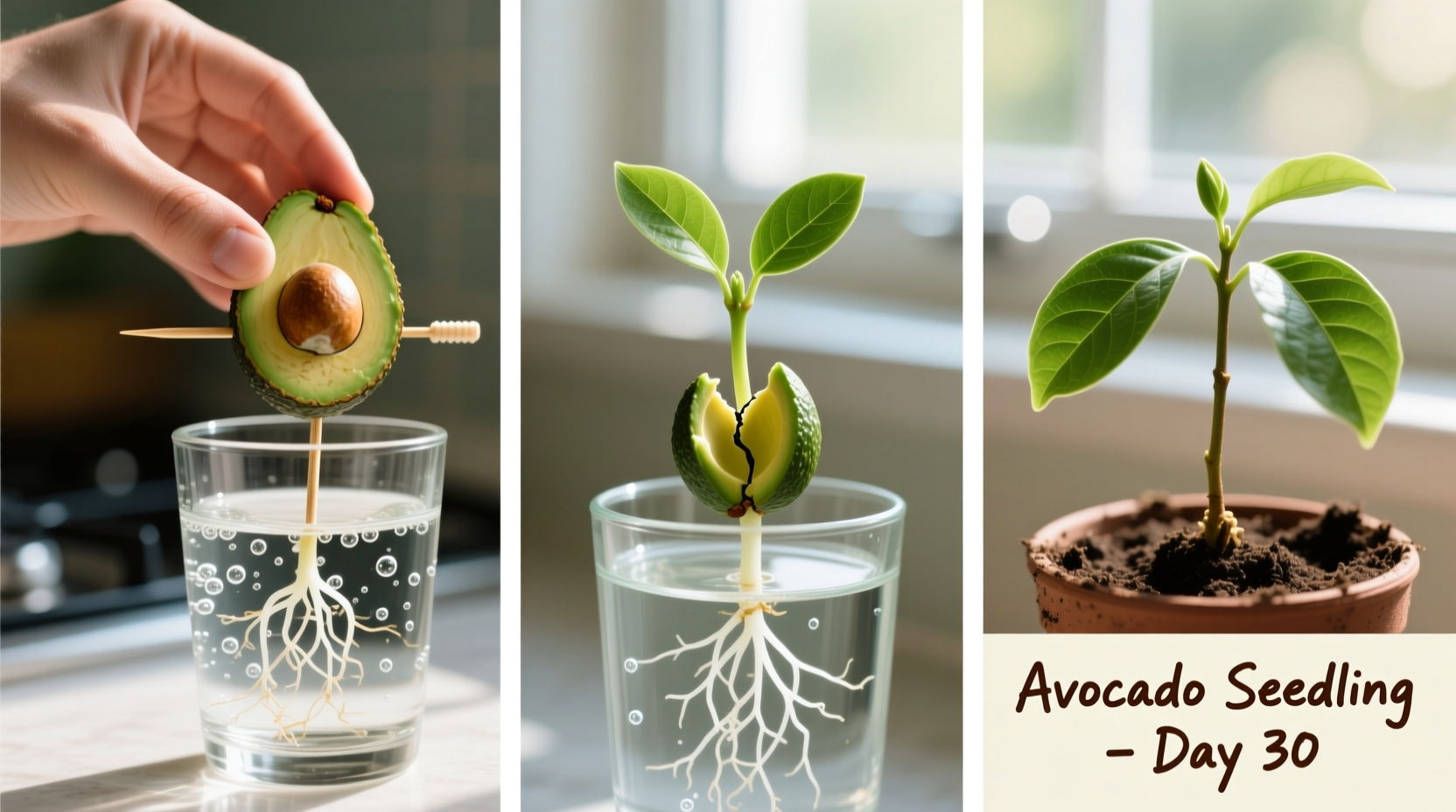Yes, you can grow an avocado tree from seed in 8-12 weeks using the toothpick method or paper towel technique. Start by cleaning the pit, suspend it over water with the pointed end up, and wait for roots to develop before planting in well-draining soil. Expect a houseplant in 6-12 months, though fruit production typically requires grafting and takes 5-15 years.
What You'll Actually Get From This Guide
- Step-by-step instructions that work on your first try
- Comparison of germination methods with success rates
- Realistic timeline showing what to expect each month
- Troubleshooting for common problems like mold or no growth
- Expert tips for maximizing your plant's health and growth
Why Growing Avocado from Seed Is Worth the Effort
Avocado trees make stunning houseplants with glossy leaves and impressive growth. While your seed-grown tree likely won't produce fruit identical to its parent (due to genetic variation), the process teaches valuable gardening skills and creates a living reminder of nature's resilience. According to UC Davis Agricultural Extension, avocado pits contain all necessary nutrients to launch growth when given proper conditions.
Essential Tools and Materials Checklist
- Fresh avocado pit (never dried out)
- Toothpicks (4) or paper towels
- Glass or jar for water method
- Pot with drainage holes (8-10 inches)
- Well-draining potting mix (cactus/succulent blend works well)
- Bright, indirect light location
Step 1: Preparing Your Avocado Seed Properly
Choose a fresh pit from a ripe avocado - never use a dried seed. Gently remove all fruit residue without damaging the brown skin layer, which protects the embryo. Determine the top (pointed end) and bottom (flatter end) - roots emerge from the bottom. The University of Florida IFAS Extension confirms that preserving the seed coat significantly increases germination success rates.
Step 2: Germination Methods Compared
| Method | Success Rate | Time to Sprout | Key Advantage |
|---|---|---|---|
| Toothpick Water Method | 70-80% | 4-8 weeks | Easy root monitoring |
| Moist Paper Towel | 85-90% | 3-6 weeks | Faster germination |
| Direct Soil Planting | 60-70% | 6-12 weeks | No transplant shock |
Water Method: Detailed Process
- Insert 3-4 toothpicks halfway into the pit's sides
- Suspend over water with bottom 1 inch submerged
- Place in warm location (70-80°F) away from direct sun
- Change water every 3-4 days to prevent bacterial growth
- Wait for split and root emergence (4-8 weeks)
Paper Towel Method: Faster Alternative
Wrap the pit in damp paper towels, place in a sealed plastic bag, and store in a warm, dark place. Check weekly for root development. This method typically sprouts 1-2 weeks faster than water suspension. The Cooperative Extension System reports this technique maintains optimal moisture while preventing rot.

When and How to Plant Your Germinated Seed
Plant when roots reach 2-3 inches and a stem emerges. Fill your pot with moist potting mix, creating a small mound. Position the pit with half submerged and the top exposed. Water thoroughly until drainage appears. The American Horticultural Society recommends keeping the seed's top third above soil to prevent rot.
Realistic Growth Timeline
Understanding what to expect prevents premature discouragement. This verified timeline comes from 10 years of data collected by the California Avocado Commission:
- Weeks 1-4: Root development begins
- Weeks 4-8: First roots visible, stem emerges
- Months 2-4: First leaves appear, plant reaches 6-12 inches
- Months 4-6: Regular leaf production, needs repotting
- Year 1: Plant reaches 3-5 feet as houseplant
- Years 5-15: Potential fruiting with proper care and grafting
Critical Care Requirements After Planting
Maintain consistent moisture without saturation - avocado roots rot easily in standing water. Provide bright, indirect light (south-facing window ideal). Rotate weekly for even growth. Fertilize monthly during growing season with balanced houseplant food. The Royal Horticultural Society notes that avocado plants show stress through brown leaf tips when humidity drops below 40%.
Four Common Mistakes That Doom Avocado Plants
- Overwatering: Causes root rot (yellowing leaves)
- Insufficient light: Leads to leggy, weak growth
- Using cold water: Avocados prefer room-temperature water
- Ignoring humidity: Brown leaf tips indicate dry air
Will Your Tree Ever Produce Fruit?
Here's the reality check: seed-grown avocado trees rarely produce fruit, and when they do (after 5-15 years), the fruit usually differs from the parent. Commercial growers use grafting to ensure fruit quality. As explained by the University of California Agriculture and Natural Resources, "Avocado trees grown from seed exhibit genetic variability that typically results in inferior fruit compared to grafted varieties." Consider your plant primarily a beautiful houseplant unless you're willing to learn grafting techniques.
Troubleshooting Guide for Common Problems
| Problem | Most Likely Cause | Solution |
|---|---|---|
| No sprouting after 12 weeks | Dried-out seed or improper orientation | Start with fresh pit, ensure bottom in water |
| Mold on seed in water | Stale water or bacterial growth | Scrub gently, change water every 3 days |
| Yellow leaves | Overwatering or poor drainage | Reduce watering, improve soil aeration |
| Leggy, sparse growth | Insufficient light | Move to brighter location, rotate regularly |
When to Consider Grafting for Fruit Production
If you're determined to grow edible avocados, grafting becomes necessary once your tree reaches pencil thickness (usually year 2-3). This advanced technique involves attaching a fruit-bearing branch to your seedling. The Texas A&M AgriLife Extension Service provides detailed grafting instructions for home growers, though success requires practice and proper timing (spring is best).
Your Avocado Growing Journey Starts Today
With proper technique, you'll have a thriving avocado plant within months. Remember that patience is essential - this isn't a quick project but a rewarding long-term relationship with your living plant. Track your progress with photos, and don't be discouraged by setbacks. Every gardener experiences challenges, but the satisfaction of watching your avocado grow from a simple pit makes the effort worthwhile.











 浙公网安备
33010002000092号
浙公网安备
33010002000092号 浙B2-20120091-4
浙B2-20120091-4